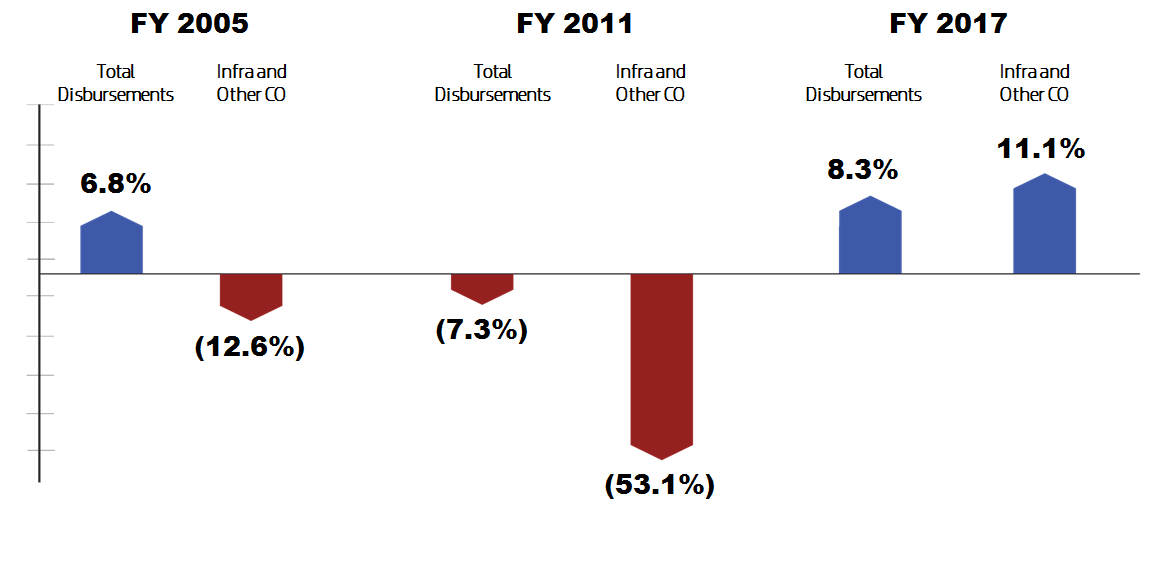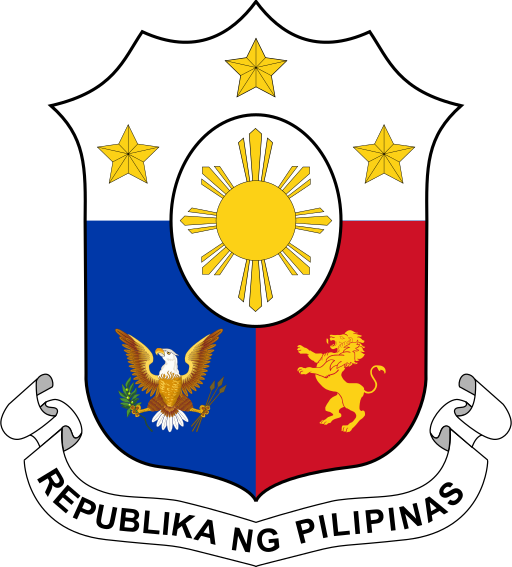
Last week, November 16, government authorities reported that the Philippine economy has expanded by 6.9% in the third quarter (Q3) of 2017. This sustains the impressive growth momentum of the economy, coming off at a 6.7% Gross Domestic Product (GDP) growth rate in the previous quarter. The robust economic expansion in Q3 also puts the year-to-date growth average at 6.7%, well in line with the government’s full-year target of 6.5% to 7.5% GDP growth for 2017.
Among the drivers of growth that allowed the Philippine economy to beat market expectations are robust government disbursements, strong government consumption, and our ambitious Build Build Build infrastructure program.
On the expenditure side (or demand side), Government Final Consumption Expenditure (GFCE) posted an 8.3% increase in Q3 of 2017. This is higher than the 3.1% improvement in Q3 of 2016, and sustains the 7.1% increase in government spending in Q2 of 2017. In effect, government spending accounted for 0.9 percentage points of the 6.9% growth rate in Q3.
Strong government consumption in the reference period was supported by increased spending on personnel services, rising by 13.9%. This is primarily due to the higher base pay of civilian government employees, and increased allowances of military and uniformed personnel.2
Expenses for maintenance and operations also registered an 8.2% growth rate, owing to higher disbursements for education, healthcare, and social protection programs of the Department of Education, Department of Health, and Department of Social Welfare and Development, respectively. This is in line with the government’s thrust in developing our young population into an agile and competent workforce capable of driving growth and innovation in the long run.
The data also suggests that the ambitious infrastructure program of the Duterte Administration, fondly called “Build Build Build”, is underway. By industrial origin (or on the supply side), public construction accelerated by 12.6% in Q3 of 2017. It builds on the strong growth in public construction in Q2, which reached 12.1%. Data on national government disbursements also show that Capital Outlays reached P172.9 billion in Q3 of 2017, up by 17.2% year-on-year. Meanwhile, Infrastructure and Other Capital Outlays reached P142.1 billion, even exceeding the P137.8 billion program in Q3 for a solid growth rate of 15.4% year-on-year. Spending on infrastructure is projected to ramp up further with the infrastructure budget rising from 5.4% of GDP in 2017 up to 7.3% of GDP by 2022.
“The economic expansion and growth in government spending is laudable, especially for a post-election year,” Budget Secretary Benjamin E. Diokno mentioned. It is noted that for the first three quarters of the year in 2005, infrastructure and other capital spending dipped by 12.6%, while total disbursements expanded by 6.8%. In 2011, infrastructure and other capital spending sunk further by 53.1% while total disbursements decreased by 7.3%. This year, the figures are much better as infrastructure spending is up by 11.1%, and total disbursements is higher by 8.3%. “The favorable growth in government spending despite coming off an election year can be attributed to our expansionary fiscal policy and more efficient utilization of resources,” Secretary Diokno noted.
“Looking ahead, the Department of Budget and Management will ensure that government spending will provide a much-needed boost to economic development,” said Secretary Diokno. “Some of the projected sources of expenditure growth in the fourth quarter include infrastructure and capital spending by implementing agencies, personnel services owing to the release of the year-end bonus, and higher maintenance and operating expenditures to sustain our social protection programs,” he added.
“Rest assured that we will exert all efforts to meet our fourth quarter targets, and ultimately, our P2.909 trillion disbursement target for FY 2017,” Secretary Diokno concluded.
1 With the second tranche of the compensation adjustment mandated by EO 201, s. 2016 implemented in FY 2017
2 By virtue of EO 201, s. 2016 and EO 3, s. 2017.
For more information, visit www.dbm.gov.ph and follow @DBMgovph on Facebook and Twitter for regular updates.

